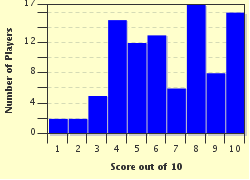Quiz Answer Key and Fun Facts
1. Considered by many to be the father of modern British conservatism, this Irish-born statesman and philosopher was also a supporter of the American Revolution as well as of greater self-rule in Ireland and India. His version of conservatism--a mixture of tradition and tolerance--became an inspiration to political conservatives around the globe.
Who is this author of "Reflections on the Revolution in France" (1790), who is often credited with the epigram, "The only thing necessary for the triumph of evil is for good men to do nothing"?
2. As foreign minister of Austria, this diplomat became a pivotal force at the Congress of Vienna, and as such, he became the primary architect of the division of nations in post-Napoleonic Europe. As Chancellor of Austria, his policies and methods of intrigue prevented the dominance of any one country on the continent.
Who is this Prince whose influence led others to refer to the European Age from 1815 to 1848 by his name?
3. On October 19, 1899, a 17-year-old boy climbed a cherry tree and, influenced by H. G. Wells' "The War of the Worlds", began to dream of building a device that could travel to Mars. On March 16, 1926, he launched the world's first liquid-fueled rocket in Auburn, Massachusetts.
Who is this professor, physicist, and engineer who is often credited as having initiated the "Space Age"?
4. While this Holy Roman Emperor's reign was long (1056-1105), it was filled with constant turmoil, much of which stemmed from the Investiture Controversy. Pope Gregory VII insisted the church had the sole power to appoint church officials while the emperor maintained the state did. The death of this obstacle to the Pope paved the way to greater Church influence over the Germans and over Europe in general.
Who is this German king who, according to legend, once stood barefoot in the snow for three days outside Pope Gregory VII's castle at Canossa until the pope rescinded his excommunication of the Holy Roman Emperor?
5. He was a naturalist painter of the late Renaissance and early Baroque periods who depicted the skin of his subjects so realistically that some remarked that his paints must have been made from ground flesh. As famous as he is for his illuminated figures against very dark backgrounds and his experimentation with chiaroscuro, he is just as infamous for his often mad and volatile behavior.
Who is this artist who scandalized Rome by using the body of a harlot drowned in the Tiber as the model for his "Death of the Virgin"?
6. If he didn't intend to master his father's occupation and become an upholsterer, then he was expected to pursue law. Instead, he sorely frustrated his family by devoting his days to the scandalous life of the stage. He wrote, produced, and even acted in his own farcical comedies, becoming arguably the greatest of all French playwrights.
Who is this author of such seventeenth-century masterpieces as "The Misanthrope" and "Tartuffe"?
7. This French machinist invented a loom with an apparatus consisting of perforated cards that would guide the action of weaving. Thus, he helped usher in the European Industrial Revolution and inspired a series of programmable machines that culminated in a digital compiler used by IBM.
What man from Lyon whose name is used not only for his loom and its apparatus but also for the kind of fabric woven on the loom?
8. When this twenty-one-year-old sultan captured Constantinople in 1453, he not only put an end to the final symbolic remainder of the Eastern Roman Empire but was well on his way to leading the Ottomans toward achieving their own empire that would last until the beginning of the twentieth century.
Who was this "Conqueror" who was utterly despised by Vlad "The Impaler" Tepes and fought many costly battles with him and his forces?
9. This medieval French scholar is, perhaps, the primary motivational force behind the growth of Scholasticism. In Paris, he became a famous debater and teacher who advocated the ideas of Aristotle and relied heavily on logic and skepticism. However, his reasoning also brought him into constant conflict with leading religious figures, such as St. Bernard and Pope Innocent II.
Who is this philosopher and theologian who is also famous for his relationship with Heloise, which led to his being castrated by the woman's guardian and to his deciding to join a monastery?
10. Had he written nothing more than the novel "Ulysses", his impact on twentieth-century culture would still be a phenomenal one. While the book had its detractors and was banned in the United States and the United Kingdom for obscenity, its use of stream-of-consciousness, rich characterization, allusions to classical literature (i.e. Homer's "Odyssey"), and experimental narration and prose have influenced literature since its 1918 serialized publication.
Who is this Irish writer who also wrote "Dubliners", "Portrait of an Artist as a Young Man", and "Finnegans Wake"?
Source: Author
alaspooryoric
This quiz was reviewed by FunTrivia editor
bloomsby before going online.
Any errors found in FunTrivia content are routinely corrected through our feedback system.

